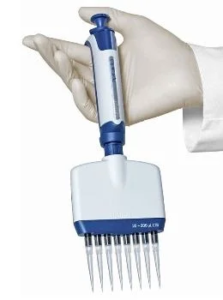Link Juice is the power a link has to improve a website’s ranking on search engines. It can come from backlinks or internal links. It is important for businesses to understand how to increase and distribute link equity.
A link’s position on a page also affects its juice. A link toward the top of the page is more valuable than one buried in the footer.

A website’s link juice is a key factor in its ranking on search engine result pages (SERPs). Garnering more high-quality inbound links can increase a site’s perceived authority, relevance, and trustworthiness. This can lead to an improvement in SEO rankings, which, in turn, can drive more organic traffic to the site. In addition, organic traffic is more likely to convert into sales or newsletter sign-ups. Therefore, it is important to harness this valuable resource by implementing a comprehensive digital marketing strategy that includes identifying and addressing any issues with the site’s backlink profile.
There are many ways to increase a website’s link juice, including creating high-quality content that is relevant to the target audience, guest blogging, and building relationships with influencers in your industry. However, it is crucial to understand how the concept of link juice works before implementing any strategy. A poorly-implemented strategy could lead to a loss of ranking power, so it is best to work with a professional SEO agency to ensure that you get the most out of your investment.
The number of links on a page also affects link juice. A higher number of links means that each individual link passes less juice. This is because each link passes a smaller percentage of the total PageRank to the linked page. Moreover, the amount of PageRank passed on to a given link can also change over time. As a result, it is crucial to create a diverse and natural linking structure on a web page.
In the past, it was possible to use the DoFollow and NoFollow attributes to control the flow of link juice. This technique was called PageRank sculpting, and it allowed website owners to redirect link juice to their most important pages. However, subsequent Google updates have changed the interpretation of these attributes.
In addition to using a variety of anchor text, it is important to consider the domain authority of the linking page. A high domain authority is a good indicator of the quality and value of the linking page. The more authoritative the linking page, the more PageRank it will pass on to the target page.
Link equity
Link equity is a concept that describes how the ranking power of one webpage passes from it to another through hyperlinks. It’s a factor that can greatly influence SEO performance, especially in competitive niches. Link equity is a vital component of any SEO strategy and it can be improved by following certain tips. These include acquiring high-quality backlinks, optimizing internal links, and using contextual anchor text. It’s also important to note that different pages will pass link juice differently. Some will pass more than others, depending on several factors, including the quality of the linking website and how much link juice is being passed to them.
For example, imagine two competing sites: A and B. If site A has many incoming links and site B doesn’t, then site A will rank higher in Google search results. However, if both sites have equal number of incoming links, site A will still rank higher because it has more “link juice” than site B. The reason is that site A has more incoming links from other sites, whereas site B only receives incoming links from its own domain.
Other factors that affect link juice include the number of outgoing links and the positioning of a link within a page. For instance, a link that is hidden in the middle of an article is less likely to be clicked, so it will not pass as much link juice as a link that is displayed prominently. Another factor is the type of URL. URLs that use 301 redirects will retain their link equity, but URLs that are temporary or 302 redirects will not.
There are ways to maximize the flow of link juice on a website, such as by organizing content into topics and linking related pages. Moreover, it is essential to identify and correct broken links on a website, as they can significantly impact the flow of link juice. In addition, it is also beneficial to add internal links to new pages when they are published. By doing so, you can help them get indexed faster and receive an initial ranking boost.
On-site optimization
A website’s page rank depends on the number and quality of inbound links, as well as its internal linking structure. A high-ranking site will usually have numerous links from authoritative sources and a large number of incoming links from relevant pages. These inbound links will boost the page’s authority, influencing its search engine ranking. In addition, a well-linked site will have a cohesive structure that makes it easy for search engines to crawl and index new content. This is known as link juice distribution, and it plays a crucial role in SEO.
The amount of link juice a page passes on also depends on its relevance and the number of outgoing links. For example, a page with many outbound links will pass less link equity to its target pages than a page with few or no outgoing links. Additionally, the location of the outgoing links on a page can affect how much link juice it passes to other pages. For example, links that are placed higher up on a page tend to receive more link equity than those that are located lower down.
In the past, webmasters used nofollow links to control this flow and prevent page rank from being passed away through outgoing links, a process known as “pagerank sculpting”. However, recent Google updates have made it difficult to fully control link juice. It’s therefore important to consider the following factors when planning your linking strategy:
The first step in maximizing link juice is to ensure that your inbound links are from trusted websites and in line with your niche. This will increase your page’s search engine optimization (SEO) ranking and improve the likelihood of getting organic traffic from your targeted audience. Additionally, you can use on-site optimization strategies to distribute link juice more evenly across your website’s pages. For instance, you can organize your content into topic groups and link related pages to each other, as well as use internal linking to help search engines find and index new pages more quickly. You should also remove orphaned pages to prevent them from wasting your domain’s link juice.
Internal linking
The number of internal links in a page is one of the most important factors that affects link juice. The more internal links a page has, the more link juice it passes to other pages on your site. This is why it’s important to create a clear internal linking structure for your website and ensure all of your pages are linked to each other. In addition, removing broken links can help maximize the amount of link juice each page gets. This is done by using tools like Ahrefs and Moz to analyze your backlinks. Using these tools will show you the amount of authority that each page has, and will help you determine whether it has enough link juice to pass on to other pages on your site.
The amount of link juice a page passes to other pages on your site depends on its domain and page authority, as well as its position in the text. Links higher up in the text pass more equity than those near the bottom of the page. Similarly, links with descriptive anchor text pass more equity than links without it. To increase the flow of link juice, make sure your anchor texts are relevant to the topic of the linked page and use a variety of keywords.
Another factor that can influence link juice is the amount of traffic a page receives. This can be a result of social media sharing, search engine optimization (SEO), and other factors. Traffic is also influenced by the length of time a user spends on a page. If a page has an engaging, compelling article, users are more likely to stay longer and engage with the content.
Link Juice is an important component of a website’s SEO performance, but it’s not always easy to measure. Many website owners miss pools of link juice concentrated on their most popular pages because they don’t know how to tap into them. The good news is that there are tools that can help you identify the strengths and weaknesses of your site’s internal link structure.








